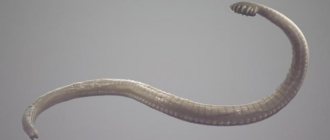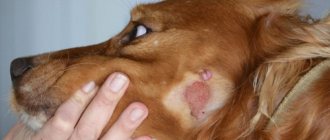A cat's fatty tissue or lipoma is a mobile and painless neoplasm
on the surface of the skin.
It occurs more often in older representatives of domestic cats; it is classified as a benign neoplasm that has connective tissue in its structure. Fortunately, these tumors do not metastasize and do not cause much harm to the health of pets. But this new growth does not always look aesthetically pleasing
.
If you find a lipoma on your furry’s body (and it can be either single or multiple), do not self-medicate, but contact the I-VET Center for Emergency Veterinary Care for Animals. Veterinarians will conduct a detailed diagnosis and then painlessly remove the “uninvited guest” from the body of your beloved cat. For information, let’s say that it is not at all expensive and is available to a wide variety of visitors with any income.
If you are a very busy person and you don’t have a free minute to visit ours, call a veterinarian at home and enjoy comfortable service! Call us at the phone number listed on the website.
What is a wen and what does it look like?
A fatty tumor is a neoplasm that is located between the skin and muscles in loose adipose tissue and can. It feels like the consistency of dough or silicone, i.e. soft and elastic. There is normal mobility and painlessness. In some cases, a lipoma can grow into the muscles - in such cases, the mobility of the tumor decreases and its density increases. Wen, as a rule, grow very slowly, but are capable of growing to significant sizes. Wen can appear anywhere there is loose fatty tissue. At first, the lipoma looks like a small, loose tubercle (bump), inactive in a relatively limited area. Depending on the conditions and condition of the body, the tumor begins to increase. Sometimes it grows to such a size that it involuntarily begins to attract attention to itself and provokes discomfort in the animal. This is explained by the fact that during the growth process the neoplasm can affect the nerve endings in the surrounding tissues.
Tumors
If you find a ball under your cat's skin,
this may be a sign of a neoplasm - a benign or malignant tumor (cancer). Any unexplained swelling, bulge, or open wound should be examined by a specialist. In most cases, benign neoplasms are found in cats.
Signs of a benign tumor: growing slowly, surrounded by a capsule, well separated from surrounding tissues. After removal it does not grow back. Wen - benign tumors of adipose tissue (lipomas) - are often found in cats. Unfortunately, lipomas can also be a serious sign of feline leukemia, a systemic cancer.
Malignant tumors are characterized by a high growth rate - the count lasts for weeks or months. They are not surrounded by a capsule and penetrate the surrounding tissues, spreading to regional lymph nodes and further throughout the body. Often such skin tumors are fused to the underlying bone.
Melanomas, growths in the form of moles, are common in cats. Old animals are more likely to develop tumors than young animals. A cat's lump under the skin in the nipple area may be a mammary gland tumor.
A malignant tumor is prone to ulceration and bleeding. You cannot heat any subcutaneous formations, try to remove them yourself, and lubricating them with external agents is useless. Take your cat to the veterinarian - he will determine the type of tumor and prescribe the necessary treatment.
Is it normal for a cat to shed a lot, or is she missing something? Read about it.
Wen in cats is much more common than in dogs. Older animals are especially susceptible to their occurrence.
A cat's wen is a soft, mobile formation under the skin. It is absolutely painless and when pressing on the affected area the animal does not experience any unpleasant sensations. In scientific language, wen are called lipomas. They are formed under the skin due to the growth of adipose tissue and are most often benign in nature.
Types of lipomas
Wen in cats can be single in appearance, or can be multiple in nature, especially in the presence of concomitant diseases (deviations in the functioning of the endocrine system). This multiple formation of wen is called lipomatosis.
According to the nature of germination, a lipoma can be simple or infiltrating:
- A simple lipoma has clear boundaries and, as it grows, does not affect the surrounding muscles, so it can easily be surgically removed.
- Infiltrating lipoma grows into the thickness of the muscles and vascular bundles and does not have a clear boundary. It is this type of neoplasm that tends to degenerate.
Reasons for appearance
Conclusions about the causes of the disease in each specific case can only be made by a specialist after a comprehensive examination of the animal. But based on the experience of previous cases, we can say that the most common causes of lipomatosis are the following:
- complicated heredity;
- metabolic disease;
- hormonal imbalances in the body;
- physical inactivity;
- endocrinological diseases;
- elderly age.
It is believed that the growth of adipose tissue in the body is promoted by enzymatic deficiency, namely, a deficiency in the body of the enzyme that breaks down fat - lipase. This statement is supported by the fact that not only obese animals are susceptible to this disease, but also those whose layer of fat in the subcutaneous tissue is small.
How long do cats with tumors live?
If the lump is benign, then it will not affect the pet's life expectancy. Such neoplasms either do not require treatment or are easily treated.
Oncological diseases are diverse, and the development of tumor processes is unpredictable, so it is impossible to accurately determine how long a cat will live.
It is important that the doctor assess the situation and prescribe treatment based on the individual characteristics of the animal. There are situations when surgery and other emergency methods are contraindicated due to the presence of chronic diseases. In this case, removing the tumor will not prolong life, but will complicate it.
Sometimes we are talking about several months or days of life without pain. The question may also arise about euthanizing your pet. But there are also frequent cases of complete recovery without relapse.
When not to interfere
The veterinarian does not always recommend going under the knife. If the wen does not interfere with your life, you can leave it alone. Thus, the question of surgery is postponed if the neoplasm:
- does not cause pain or serious discomfort;
- small in size and does not grow;
- has no signs of inflammation or pus.
Under no circumstances should you pierce a lipoma, warm it up, or apply lotions. It will not resolve on its own. This can only provoke its growth, and therefore its degeneration into a malignant one.
Lipoma can only be removed by a veterinarian
Should we remove a wen on the neck?
Cervical wen is always cut out, even if it seems that the neoplasm does not bother the cat in any way. In this case, there is always a risk that the tumor will compress important blood vessels and disrupt the flow of oxygen to the brain. The latter is fraught with brain hypoxia and death.
Clinical picture and diagnosis
Single subcutaneous lipomas, typically located, can be easily palpated during examination as soft, painless formations that are easily displaced upon palpation. If the wen is large and located deeper (along the spine or nerve endings), then when pressure is applied, the animal may feel discomfort and pain.
If a lipoma has formed in any organ, you can find out about its presence by indirect signs of its compression. To clarify the diagnosis, modern diagnostic methods are used (magnetic resonance imaging or computed tomography). These methods are effective in preparing an animal for surgery, as they make it possible to determine the exact size of the tumor and its location.
Diagnostic methods
If you suspect a lipoma, you must promptly contact a veterinarian and treat the animal. Before selecting treatment, diagnostic examinations are performed to determine the structure of the tumor and its nature. Diagnostics is also necessary before surgical removal of a lipoma in a cat. To confirm the diagnosis, the following manipulations are performed:
- magnetic resonance and computed tomography;
- histology of damaged tissues to exclude vascular aneurysm, helminthic invasion and oncology.
Histological examination of a tumor in a cat is performed only after removal of the lipoma, especially if it is located in a hard-to-reach place.
Establishing diagnosis
Due to the fact that lipomas do not cause pain, owners often do not pay attention to them. However, after detecting a formation in a cat, it is important to consult a doctor to determine the correct diagnosis. This is explained by the fact that only in the clinic will they be able to determine whether it is a wen or other types of malignant tumor. And also prevent the growth of the tumor. Wen is not an infectious disease and therefore cannot be transmitted to people or other pets.
The veterinarian carries out a number of preliminary measures:
- signs of a wen in a cat are determined by external examination;
- X-ray, ultrasound; puncture biopsy.
© shutterstock
When palpating a cat, single wen can be easily felt. They are soft and easy to move. An x-ray will determine the presence of metastases. In cases where wen is located in hard-to-reach areas, ultrasound will help determine the need for surgery. Using a biopsy, the type of cells that make up an organ or formation in it is determined. A puncture biopsy will clarify the nature of the tumor: benign or malignant. Cytological examination is carried out before surgery.
Should I delete it?
It is clear that a surgeon’s scalpel does not evoke any pleasant associations. However, the final decision on whether to leave everything as is is made only by the veterinarian. Most often, he opts for surgery and here’s why:
- in some cases, the wen malignizes and degenerates into liposarcoma, which clearly leads to death;
- the wen turns out to be not what it seems (that is, the test shows that it is a tumor of a different kind);
- the wen can compress the blood vessels;
- tumors interfere with the cat's movements.
Lipoma in the neck area must be removed
Attention! If the wen is located in the cat's neck area, it must be removed.
Treatment of the disease
Based on the diagnostic results, the doctor can make two decisions:
- constant monitoring of the dynamics of the tumor;
- performing surgery to remove a lipoma.
Surgery to remove a simple lipoma is usually simple and is done under local anesthesia. A large tumor that is difficult to reach may require general anesthesia.
Preparation for the operation should include the following:
- it is necessary to inform the surgeon about what medications the animal has taken recently;
- you should not feed the cat on the last day before surgery;
- You need to give her enough fluids.
In the case of a burst wen, the operation to remove it is transferred from the category of planned to the category of urgent.
This operation usually does not last long, after which the patient recovers quite quickly. The doctor makes an incision and removes the capsule containing the wen, separating it from healthy tissue. The resulting cavity is carefully stitched. Healing usually goes well, and after 7-10 days the stitches are removed.
If the surgeon has to deal with an infiltrating lipoma that has grown into muscle tissue, then it takes more time to free the affected muscles. This increases the wound surface, and, accordingly, rehabilitation lasts longer. Sometimes large nerves in the back are involved in the pathological process. In this case, special professionalism is required from the doctor so as not to damage them without impairing the sensitivity and motor function of the body.
The postoperative period requires maintenance therapy:
- prescribing sedatives, antibiotics and anti-inflammatory drugs;
- prescribing IVs with an electrolytic solution to combat dehydration;
- home monitoring of the animal's condition;
- A protective collar on the cat's neck will help protect the post-operative area from licking and infection.
Deterioration in the animal’s well-being requires urgent consultation with a veterinarian.
Features of treating wen in a pet
There is only one treatment option for lipoma in a cat - surgical removal. Owners of pets with this pathology have to agree to surgery if the wen limits the animal’s movements. Also, you should not refuse the procedure if the cat constantly scratches the tumor that is bothering him with his claws.
If a specialist recommends leaving the wen alone, then the cat’s owner will have to constantly monitor any changes that will occur in the future with the neoplasm. This is the only way to notice in time its significant increase or degeneration into cancer.
The operation to remove a wen in a cat is as follows:
- First, the surgeon makes a small incision.
- If the tumor is small, it can be easily removed without additional manipulation.
- If the wen is very large, massive drainage will be required.
- During removal of an infiltrative tumor, it is necessary to excise the affected muscle tissue.
After the operation, the cat will have to take non-steroidal and sedative medications for some time to help the animal’s body recover faster.
If the operation was complex and after it the cat cannot move independently, then she must be given a drip with a solution that helps prevent dehydration.
It is very important to monitor the cat's condition during the postoperative period. It is necessary to ensure that the animal under no circumstances throws off the tight bandage. The pet should not be allowed to independently lick the wound received during surgery.
The veterinarian will explain to the cat's owner how to properly treat a wound on the animal's body. It is worth listening to the recommendations of a specialist. It is necessary to ensure that the damaged area remains covered with a bandage until the pet recovers completely. Otherwise, an infection may get into the wound, which will significantly slow down the cat’s recovery after surgery.
Clinic
Older cats are most often affected. These animals suffer much less often than their canine counterparts. If any formation appears on the skin of an animal, you should immediately seek qualified medical help to exclude a cancerous tumor and carry out treatment in a timely manner.
The symptoms are always the same; swelling appears on some part of the body. She can remain in this position for a long period of time. Over time it grows, the sizes may vary. The pet's general condition does not suffer, it may cause discomfort when walking or lying down, depending on the location of the wen.
Veterinarians, having carried out an examination and diagnosis, remove the tumor, followed by a histological examination of the cells.
Disease prognosis
The prognosis of the disease, subject to surgical intervention, is favorable, especially if the size of the wen is small and the cat is in good physical condition. Relapses of the disease are rare. Almost all cases of relapse relate to infiltrating variants of the disease. Recently, veterinarians have been practicing radiotherapy for such forms of the disease, which has significantly increased the percentage of cases of complete recovery.
Lipoma or wen are diseases for which self-medication is unacceptable. At best it will be ineffective, and at worst it will be harmful. Therefore, the only possible way out in such a situation is to visit a veterinary clinic.
Diagnosis of pathology in cats
An owner who is concerned about the condition of his pet should bring him to a competent specialist for examination. The veterinarian will conduct a number of mandatory studies:
- First, the doctor must carefully examine the animal.
- Next, he will ask the cat's owner questions about her health.
- Afterwards, general laboratory tests are carried out, which include blood and urine tests.
- If a specialist cannot diagnose a disease based on the test results, he will prescribe an ultrasound scan for the animal.
In addition to ultrasound, CT is also prescribed. These diagnostic methods allow the veterinarian to determine the degree of infiltrative neoplasm.
In rare cases, it becomes necessary to conduct a study of the cat's immune system. This diagnosis helps the specialist make the correct diagnosis. After all, lipoma symptoms often appear in various immunodeficiency states of pets, as well as in leukemia.
Results of treatment of lipoma in a cat
Veterinarians claim that after removing a wen from a pet in the postoperative period, the risk of relapse of the disease is very small. The reappearance of a lipoma should not be ruled out if it belonged to the group of infiltrative neoplasms.
Under no circumstances should you try to remove a wen on a cat’s body on your own. If such seals are detected, you should immediately contact an experienced specialist. Only he can find out how dangerous the lipoma is and whether it is worth removing.
Dangerous symptoms
The larger the formation, the more discomfort it causes the animal. Wen often remains undetected in cats for a long time, since there is no obvious clinical picture. The earlier a lipoma is recognized, the easier it is to treat and restore your pet. Externally, this is a soft neoplasm, upon palpation of which the pet does not feel pain. If you try to move it to the side, it moves easily. Unpleasant symptoms are observed in the case of large growth of the lipoma, as a result of which there is a high probability of compression of the nerve endings. Often a lipoma is localized on an internal organ.
First aid and treatment for cats
As a rule, first aid and treatment of a cat in such cases is the prerogative of a veterinarian. We can advise the owners themselves the following:
- It is necessary to immediately provide the animal with complete rest; if necessary, it should be isolated from other pets and small children.
- If the lump has formed suddenly, you can apply cold in the first half hour to an hour. Do not use warming or cooling ointments.
- To make paw care and treatment easier, you can clip the hair around the coat.
- If pus or other exudate is released from the neoplasm, it must be regularly removed from the skin.
Caring for a cat after removal of a wen
The rehabilitation period involves:
- Drip administration of drugs that prevent dehydration of the body.
- Use of sedatives and painkillers. The products are selected individually, taking into account the age and characteristics of the cat’s body.
- Use of antibacterial and anti-inflammatory drugs.
- Apply a bandage until the wound is completely healed. It should be changed every day and make sure that it is well fixed, otherwise an infection will get into the wound, which will complicate and slow down its healing. If the wen has been removed from the abdomen, a bandage is put on the animal.
- Putting a collar on your pet. It is necessary to avoid licking the wound.
- Postoperative suture care. It should be kept clean and treated if necessary.
- Constant control over the general condition of the animal. If inflammation or bleeding is detected in the surgical area, it is necessary to show your pet to a veterinarian as quickly as possible.
No correction of the cat's nutrition is required in this situation. It is recommended to place the pet in a warm, quiet place during rehabilitation. If there are children in the house, they should be asked not to cuddle the cat.











